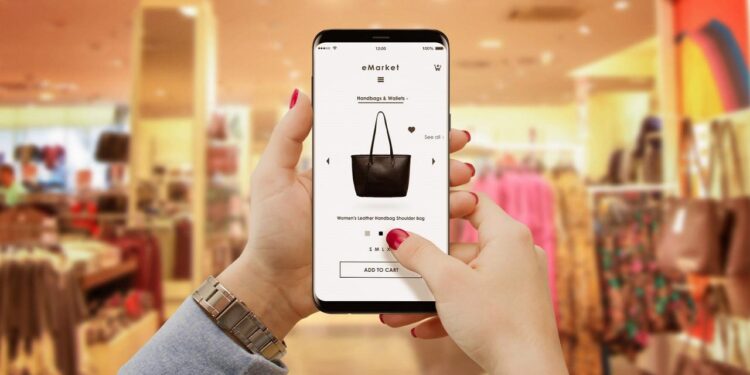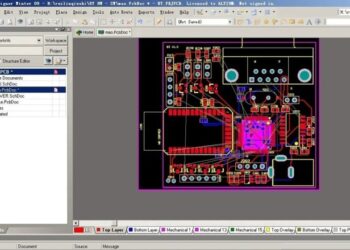Visual Search Technology in Online Retail opens up a world of possibilities, revolutionizing the way customers discover products online. This article delves into the intricacies of this innovative technology and its impact on the e-commerce landscape.
Introduction to Visual Search Technology in Online Retail
Visual search technology in the context of online retail refers to the use of images instead of text to search for products online. This cutting-edge technology allows shoppers to simply upload a picture or take a photo of an item they are interested in, and then receive search results of visually similar products available for purchase.
This innovative technology enhances the shopping experience for customers by providing a more intuitive and convenient way to search for products. It allows users to find items they are looking for faster and with greater accuracy, eliminating the need to try and describe products in text-based searches.
Visual search technology also helps users discover new products they may not have known existed, based on the visual similarities of the items they upload.
Examples of Popular Visual Search Tools in Online Retail
- Google Lens: Google's visual search tool allows users to search the web using images taken with their smartphone camera. It can identify objects, landmarks, and products, providing relevant search results.
- Pinterest Lens: Pinterest's visual search tool enables users to search for similar products by simply snapping a picture or uploading an image. It also suggests related items and provides shopping links for easy purchase.
- Amazon StyleSnap: Amazon's visual search tool allows users to upload a photo of a fashion item they like, and then provides recommendations for similar products available on Amazon for purchase.
Benefits of Visual Search Technology for Online Retailers
Visual search technology offers numerous benefits to online retailers, revolutionizing the way customers discover products on e-commerce platforms and ultimately increasing conversion rates. By enabling users to search for products using images rather than text, visual search technology enhances the overall shopping experience and streamlines the path to purchase.
Improved Product Discovery
Visual search technology enhances product discovery by allowing users to simply snap a picture or upload an image to find similar products. This eliminates the need for users to accurately describe an item in text, making it easier for them to find what they are looking for.
For example, if a customer sees a pair of shoes they like on social media, they can use visual search technology to find similar shoes on an online retailer's platform, thus expanding their options and increasing the likelihood of a purchase.
Increased Conversion Rates
By simplifying the search process and providing more accurate results, visual search technology can significantly increase conversion rates for online retailers. When customers are able to quickly find products that match their preferences through images, they are more likely to make a purchase.
This streamlined process reduces the chances of users abandoning their carts due to frustration or inability to find what they are looking for, ultimately boosting sales and revenue for retailers.
Successful Implementation Examples
Several online retailers have successfully implemented visual search technology to enhance the shopping experience for their customers. For instance, Pinterest's Lens feature allows users to take pictures of items in real life and find similar products on the platform, driving engagement and sales.
Similarly, ASOS utilizes visual search technology to help customers find clothing and accessories by simply uploading an image, improving the overall shopping experience and increasing customer satisfaction.
How Visual Search Technology Works

Visual search technology in online retail works by utilizing sophisticated image recognition algorithms to analyze images and provide accurate search results based on visual cues. This technology allows users to search for products online by uploading images or taking photos of items they are interested in, rather than typing out search queries.
Image Recognition Algorithms
Image recognition algorithms play a crucial role in visual search technology. These algorithms are designed to analyze and interpret visual information within images, identifying key features such as shapes, colors, textures, and patterns. By comparing these features with a database of product images, the algorithm can accurately match the input image with relevant search results.
- Convolutional Neural Networks (CNNs): CNNs are commonly used in visual search technology to process and extract features from images. These deep learning models are trained on large datasets to recognize patterns and objects within images.
- Feature Extraction: Image recognition algorithms extract features from images, such as edges, corners, and textures, to create a numerical representation of the visual content. These features are then compared to similar features in the database to identify matching products.
- Similarity Matching: Once the features of the input image are extracted, the algorithm performs similarity matching to find the most relevant products based on visual similarity. This process involves comparing the extracted features with those of products in the database to determine the best match.
Visual Search Process
The process of visual search in online retail involves several key steps, from image input to search results. Users can initiate a visual search by uploading an image or taking a photo of a product they wish to find online.
The technology then analyzes the visual features of the image and compares them to a database of product images to identify matching items
- Image Input: Users upload an image or take a photo of a product using a visual search tool on an online retail platform.
- Feature Extraction: The image recognition algorithm extracts key features from the input image, such as colors, shapes, and textures.
- Similarity Matching: The algorithm compares the extracted features with those of products in the database to find the most visually similar items.
- Search Results: The visual search technology generates search results based on the best matches found, displaying relevant products that closely resemble the input image.
Challenges and Limitations of Visual Search in Online Retail

Implementing visual search technology in online retail comes with its own set of challenges and limitations that need to be addressed for optimal functionality and accuracy.
Common Challenges Faced by Online Retailers
- Product Variations: Visual search technology may struggle to accurately identify products with various sizes, colors, or styles, leading to incorrect search results.
- Image Quality: Poor quality images can hinder the system's ability to recognize products, impacting the overall search experience for users.
- Data Privacy Concerns: With visual search, there are potential privacy issues related to storing and using customer images, requiring strict data protection measures.
Limitations of Current Visual Search Technology
- Complex Objects: Current visual search technology may struggle with identifying complex objects or products with intricate designs, limiting its accuracy.
- Lack of Context: Visual search algorithms may not always consider the context in which a product is being used, leading to inaccurate search results.
- Processing Speed: The speed at which visual search technology processes images and delivers results can sometimes be slow, affecting user experience.
Strategies to Overcome Challenges and Improve Accuracy
- Enhanced Data Training: Continuously updating and refining the system's database with more diverse and high-quality images can improve accuracy in identifying products.
- Contextual Understanding: Incorporating contextual cues and user behavior data can help the algorithm better understand the intent behind the visual search, leading to more accurate results.
- Advanced AI Algorithms: Investing in advanced artificial intelligence algorithms can enhance the system's ability to recognize complex objects and improve overall accuracy.
Future Trends in Visual Search Technology for Online Retail
The future of visual search technology in online retail is set to be even more innovative and transformative. Let's explore some emerging trends that will shape the way we shop online and enhance the overall user experience.
Integration of Augmented Reality and Virtual Reality
In the coming years, we can expect to see a seamless integration of visual search technology with augmented reality (AR) and virtual reality (VR) in the e-commerce space. This integration will allow online shoppers to visualize products in their own environment or try them on virtually before making a purchase.
This immersive shopping experience will bridge the gap between online and offline retail, making it easier for customers to make informed decisions.
Evolution of Visual Search Technology
As technology continues to advance, visual search technology will evolve to meet the changing needs and preferences of online shoppers. We can anticipate more accurate and faster search results, enhanced recommendation systems based on visual data, and improved user interfaces that make the shopping experience more intuitive and personalized.
Additionally, the use of artificial intelligence and machine learning algorithms will further enhance the capabilities of visual search technology, making it an indispensable tool for online retailers.
Summary
In conclusion, Visual Search Technology in Online Retail is not just a trend, but a game-changer in how online shopping is conducted. As technology continues to evolve, so will the shopping experience for consumers.
Question Bank
How does visual search technology enhance the shopping experience?
Visual search technology allows customers to search for products using images rather than text, making the process more intuitive and efficient.
What are some challenges faced by online retailers with visual search technology?
Common challenges include accurately identifying products from images and ensuring seamless integration with existing e-commerce platforms.
How can online retailers improve the accuracy of visual search results?
Implementing advanced image recognition algorithms and continuously refining the technology can help improve the accuracy of visual search results.












